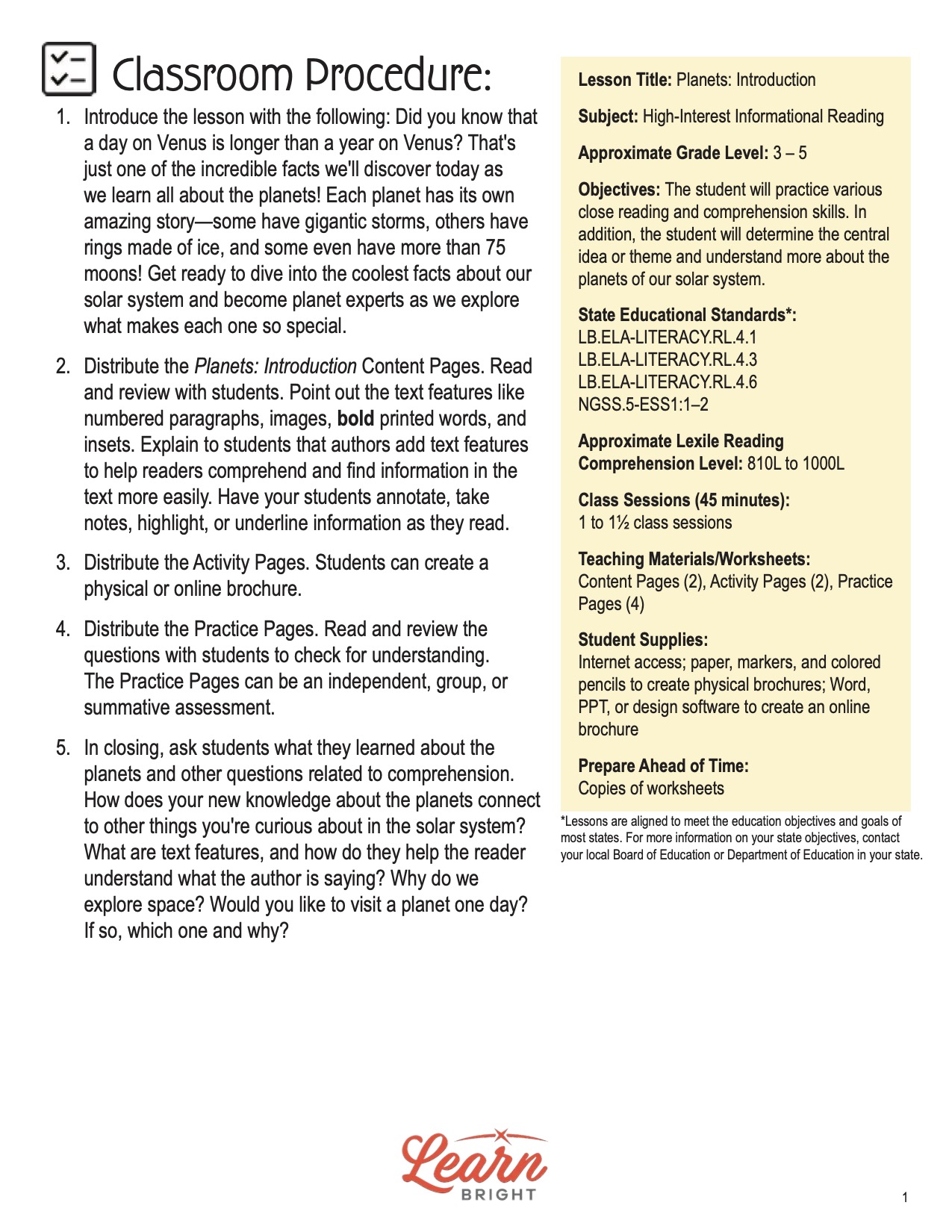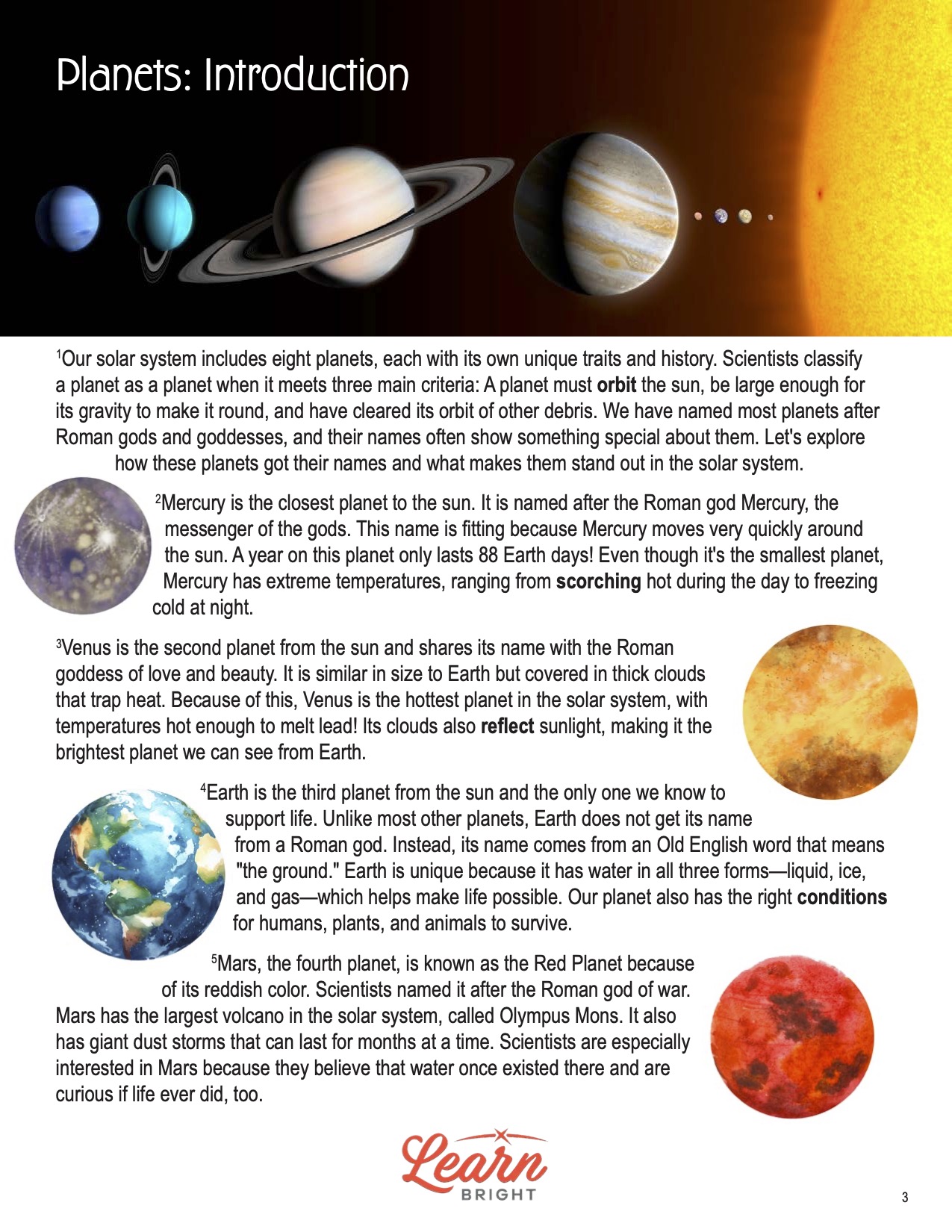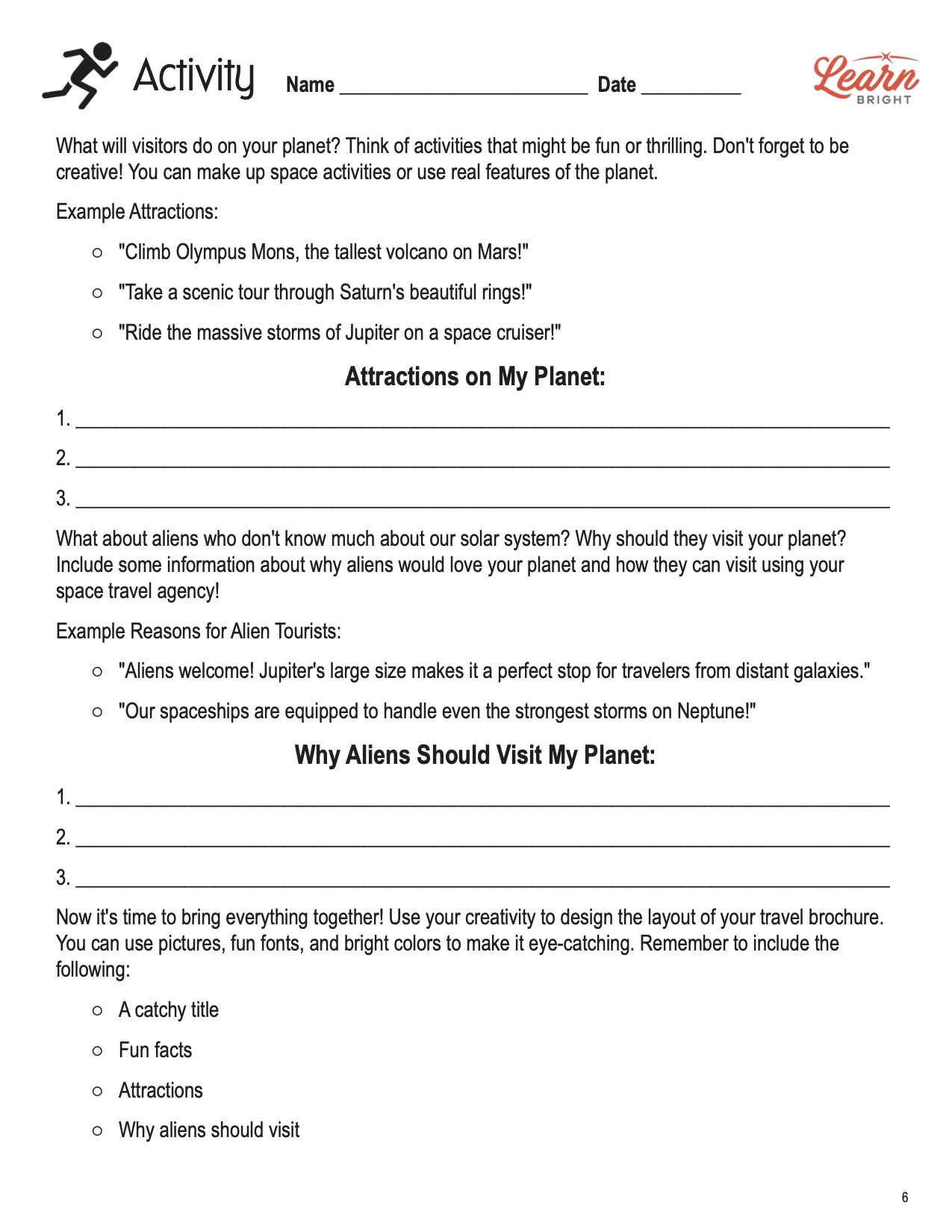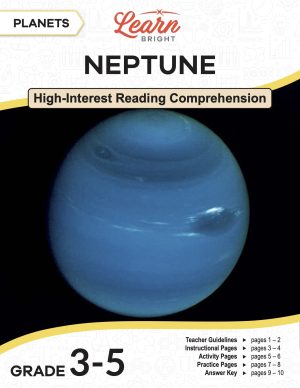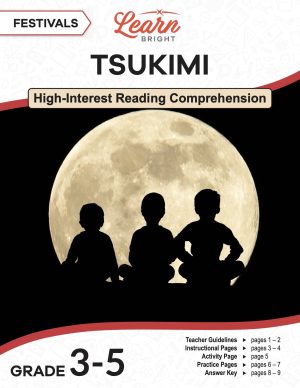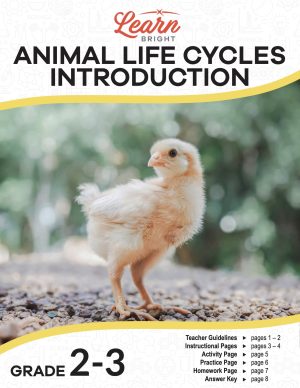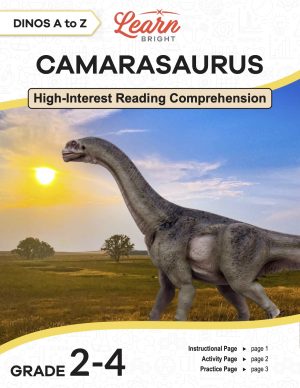Description
What our Planets: Introduction lesson plan includes
Lesson Objectives and Overview: Planets: Introduction is a high-interest reading comprehension lesson plan. As such, students will practice various close reading and comprehension skills. In addition, they will learn about the eight (plus Pluto) planets in our solar system. This lesson is for students in 3rd grade, 4th grade, and 5th grade.
Classroom Procedure
Every lesson plan provides you with a classroom procedure page that outlines a step-by-step guide to follow. You do not have to follow the guide exactly. The guide helps you organize the lesson and details when to hand out worksheets. It also lists information in the yellow box that you might find useful. You will find the lesson objectives, state standards, and number of class sessions the lesson should take to complete in this area. In addition, it describes the supplies you will need as well as what and how you need to prepare beforehand. The activity requires a number of supplies, including CDs, foam balls, and paperclips. You may want to cut the foam balls in half ahead of time.
Teacher Notes
The teacher notes page provides an extra paragraph of information to help guide the lesson and remind you what to focus on. It explains that you can teach this lesson in a whole-class setting or as an independent, small-group activity. The blank lines on this page are available for you to write out thoughts and ideas you have as you prepare the lesson.
PLANETS: INTRODUCTION LESSON PLAN CONTENT PAGES
The Planets of our Solar System
The Planets: Introduction lesson plan contains two content pages. Our solar system includes eight planets, each with its own unique traits and history. Scientists classify a planet as a planet when it meets three main criteria: A planet must orbit the sun, be large enough for its gravity to make it round, and have cleared its orbit of other debris. We have named most planets after Roman gods and goddesses, and their names often show something special about them. Let’s explore how these planets got their names and what makes them stand out in the solar system.
Mercury, Venus, and Earth
Mercury is the closest planet to the sun. It is named after the Roman god Mercury, the messenger of the gods. This name is fitting because Mercury moves very quickly around the sun. A year on this planet only lasts 88 Earth days! Even though it’s the smallest planet, Mercury has extreme temperatures, ranging from scorching hot during the day to freezing cold at night.
Venus is the second planet from the sun and shares its name with the Roman goddess of love and beauty. It is similar in size to Earth but covered in thick clouds that trap heat. Because of this, Venus is the hottest planet in the solar system, with temperatures hot enough to melt lead! Its clouds also reflect sunlight, making it the brightest planet we can see from Earth.
Earth is the third planet from the sun and the only one we know to support life. Unlike most other planets, Earth does not get its name from a Roman god. Instead, its name comes from an Old English word that means “the ground.” Earth is unique because it has water in all three forms—liquid, ice, and gas—which helps make life possible. Our planet also has the right conditions for humans, plants, and animals to survive.
Mars, Jupiter, and Saturn
Mars, the fourth planet, is known as the Red Planet because of its reddish color. Scientists named it after the Roman god of war. Mars has the largest volcano in the solar system, called Olympus Mons. It also has giant dust storms that can last for months at a time. Scientists are especially interested in Mars because they believe that water once existed there and are curious if life ever did, too.
Jupiter is the fifth planet and the largest in our solar system. Its name comes from the king of the Roman gods. Jupiter is so big that all the other planets could fit inside of it! One of the most famous features of this planet is its Great Red Spot, a giant storm that has been raging for hundreds of years. Jupiter also has at least 95 moons. The largest one is Ganymede, which is the largest moon in the whole solar system.
Saturn is the sixth planet from the sun and is known for its beautiful rings. Saturn is the name of the Roman god of agriculture. The planet’s rings are made of ice and rock, stretching thousands of miles around the planet. Even though Saturn is a gas giant, it has a low density, meaning that it would float in water like a rubber duck. If only there were a bathtub big enough! Saturn also has around 145 moons—the most in our solar system!
Uranus, Neptune, and Pluto
Uranus, the seventh planet from the sun, is named after the Greek god of the sky. It is different from other planets because it rotates on its side like a barrel. This means that one pole is in darkness for 42 years while the other is in sunlight for the same amount of time. Uranus also has rings like Saturn, but they are faint. Its blue-green color comes from the methane gas in its atmosphere.
Neptune is the eighth and farthest planet from the sun. Its name comes from the Roman god of the sea because of its deep blue color. Neptune has the strongest winds in the solar system. Its storms can reach speeds of 1,200 miles per hour. It also has 14 moons, with Triton being the largest. Triton is also the coldest place in the solar system.
What about Pluto? Well, we are glad you asked that question! While we used to consider Pluto the ninth planet, it was reclassified as a dwarf planet in 2006. This is because it doesn’t meet all the criteria for being a planet—it hasn’t cleared its orbit of other debris. Even though Pluto is no longer considered a planet, it remains an integral part of our solar system’s story. From Mercury’s scorching surface to Neptune’s windy storms, the planets help us understand the wonders of space and the universe beyond our world.
PLANETS: INTRODUCTION LESSON PLAN WORKSHEETS
The Planets: Introduction lesson plan includes two worksheets: an activity worksheet and a practice worksheet. Each one will help students solidify their grasp of the material they learned throughout the lesson. You can refer to the classroom procedure guidelines to know when to hand out each worksheet.
PLANETS TRAVEL GUIDE ACTIVITY WORKSHEET
For the activity, students will pretend that they’ve just been hired by a brand-new travel agency called Galactic Getaways. Their mission is to create an exciting travel guide or brochure that would convince people on Earth and aliens to visit other planets in the solar system.
PLANETS: INTRODUCTION REVIEW PRACTICE WORKSHEET
The practice worksheet lists 10 questions based on the content. These questions all relate to the content pages, so students will need to refer to them often for the answers. In addition, each question provides which reading tool the question corresponds to, such as text feature, vocabulary, or comprehension.
Worksheet Answer Keys
At the end of the lesson plan document is an answer key for the practice worksheet. The correct answers are all in red to make it easier for you to compare them with students’ responses. If you choose to administer the lesson pages to your students via PDF, you will need to save a new file that omits these pages. Otherwise, you can simply print out the applicable pages and keep these as reference for yourself when grading assignments.


